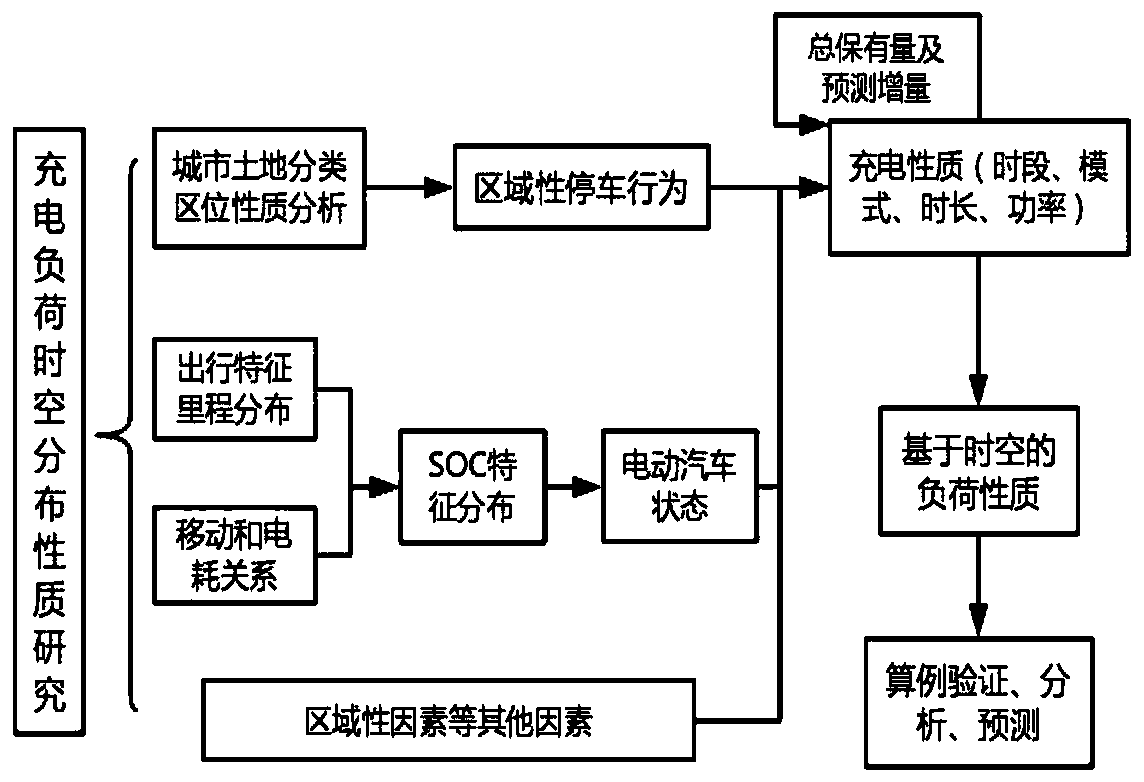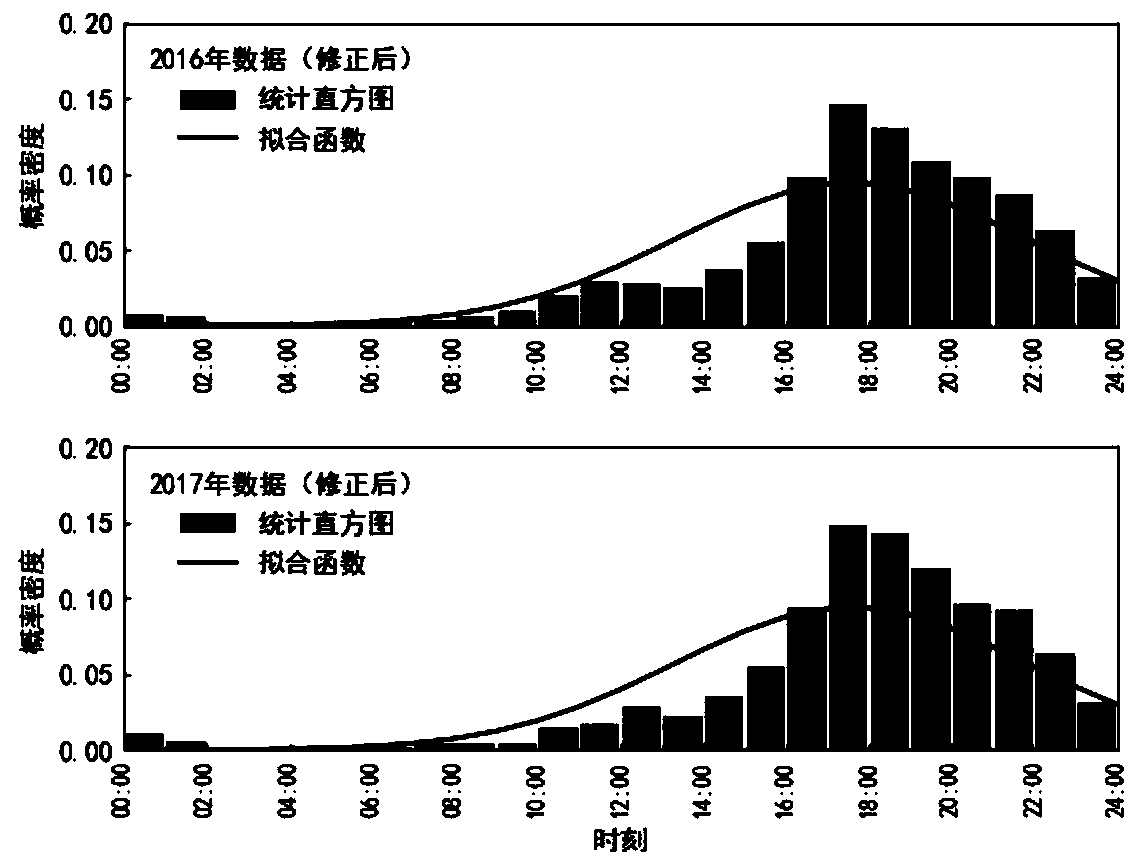Electric vehicle resident area charging load analysis and prediction method based on mathematical model
A technology of electric vehicles and mathematical models, applied in forecasting, data processing applications, instruments, etc., can solve problems affecting power quality, voltage loss, three-phase imbalance, node voltage offset, etc.
- Summary
- Abstract
- Description
- Claims
- Application Information
AI Technical Summary
Problems solved by technology
Method used
Image
Examples
Embodiment Construction
[0035] The present invention will be further described below in conjunction with the accompanying drawings. The following description of the principle of the present invention in conjunction with the accompanying drawings is only used to explain the present invention, not to limit the scope of the present invention.
[0036] Such as figure 1 As shown, the present invention implements a mathematical model-based method for analyzing and predicting the charging load of electric vehicle residential areas. On the one hand, the parking properties and location properties of urban residential areas are investigated, and on the other hand, various properties of electric vehicles are also step by step Analysis and research are carried out, and a comprehensive analysis and prediction model is thus established. The analysis and prediction method of the charging load in the electric vehicle residential area is as follows:
[0037] Step (1): Study the parking generation rate in different ...
PUM
 Login to View More
Login to View More Abstract
Description
Claims
Application Information
 Login to View More
Login to View More - R&D
- Intellectual Property
- Life Sciences
- Materials
- Tech Scout
- Unparalleled Data Quality
- Higher Quality Content
- 60% Fewer Hallucinations
Browse by: Latest US Patents, China's latest patents, Technical Efficacy Thesaurus, Application Domain, Technology Topic, Popular Technical Reports.
© 2025 PatSnap. All rights reserved.Legal|Privacy policy|Modern Slavery Act Transparency Statement|Sitemap|About US| Contact US: help@patsnap.com



